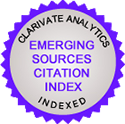Urban mobility in Belo Horizonte/Minas Gerais/Brazil: indicators and projections for travel by automobiles
Keywords:
urban mobility, individual trnasportation, public transportation, flows projection, origin destination research
Abstract
The increase in car sales in Brazil in the last decades has had the direct consequence of expanding the use of individual transportation to the detriment of the collective. Evidence for Belo Horizonte, capital of the state of Minas Gerais, seems to indicate this tendency, with the gradual reduction of the use of its main mode of collective transportation: the bus. The present work aims to analyze the current conditions and to design the use of transportation by car in the displacements developed in Belo Horizonte. The projection methodology used the trend lines of the linear regression model and as data base the trip matrix extracted from the Pesquisa Origem e Destino da Região Metropolitana de Belo Horizonte from the years of 1992, 2002 and 2012, as well as a factor based on the variation of household income between 2000 and 2010. In general, the projections for 2022 indicate the permanence of the concentration of travel by car in the central, pericentral and higher income regions of the municipality, in addition to the expressive growth of this mode in the peripheries. There is, in this sense, the imminent need for improvements in public transportation facing the reality that presents itself for the next years.Downloads
Download data is not yet available.
Published
2019-04-01
How to Cite
Antunes Lessa, D., Candido Miranda, G., Lobo, C., & Cardoso, L. (2019). Urban mobility in Belo Horizonte/Minas Gerais/Brazil: indicators and projections for travel by automobiles. Revista Transporte Y Territorio, (20), 288-306. https://doi.org/10.34096/rtt.i20.6393
Section
Artículos

1.jpg)

3.png)























